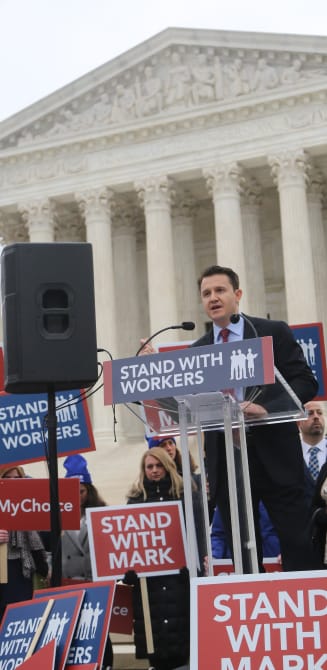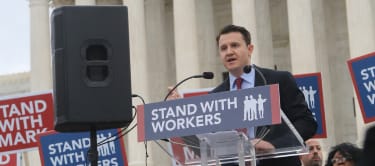The 340B Drug Discount Program was created by Congress in 1992 as part of the Veteran’s Health Care Act (P.L. 102-585). The authorizing statute, Section 340B of the Public Health Service Act (42 U.S.C. §256b) mandates that drug manufacturers participating in Medicaid sell outpatient drugs at discounted prices to safety net health care providers (“covered entities”) serving eligible needy patients. The goal of 340B is to facilitate the provision of comprehensive care while augmenting the impact of finite federal resources.
The 340B program is administered by the Health Resources and Services Administration (HRSA) of the U.S. Department of Health and Human Services (HHS). Over its 33-year history, the program has grown to become the second largest federal drug pricing program. Only Medicare Part D is larger. The number of covered entities (CE) has increased exponentially from fewer than 500 to over 55,000 to include most nonprofit hospitals in the U.S. as well as their off-site clinics and services.[1]
From an economic perspective, 340B CEs used the program to purchase $66.3 billion in outpatient drugs in 2023.[2] This represents 9.2 percent of the total $722.5 billion spent on prescription drugs that year.[3] Further, the fraction of 340B purchases to total prescription drug spending increased by two percent between 2021 and 2023. Accordingly, the financial impact can be assessed as significant and increasing.
Though not funded by federal tax dollars, multiple concerns have arisen about the 340B program. These concerns largely focus on price transparency in the acquisition of drugs, how revenue generated from the discounts is utilized, the growth of the program’s scope and the resultant financial implications. Consequently, multiple efforts have been undertaken to legislate changes that would enhance the oversight HRSA has over the 340B to ensure the program achieves its original purpose of supporting entities that serve eligible, disadvantaged patients.
Target areas for reform and suggestions for reasonable remedies include the following:
CONTRACT PHARMACIES: Originally, 340B program outpatient drugs were made available to patients solely through in-house pharmacies. To improve patient access, 340B was modified in 1996 allowing CEs to contract with a single external pharmacy for dispensing drugs to eligible patients if the CE did not have a pharmacy on site.[4] In 2010, the Affordable Care Act further expanded access by permitting CEs to contract with an unlimited number of outside pharmacies to provide drugs to eligible patients. Well intentioned as this may have been, the consequence has been dramatic. As of July 2023, there were over 33,000 unique locations acting as 340B contract pharmacies.[5]
The post-ACA proliferation in contract pharmacies has raised questions concerning the number of contract pharmacies that are genuinely and demonstrably needed. This striking increase in numbers has magnified concerns about the integrity of the program. On the other hand, there are valid opposing concerns about impeding patient access in rural and underserved areas. There are also related concerns about the increasing number of 340B medications available only through specialty pharmacies found in limited locations.
Consequently, reforms directed at restricting the number contract pharmacies must consider and account for the differences between CEs in urban versus rural settings to ensure that patients in rural and underserved areas maintain access to their medications including those available only through specialty pharmacies.
TRANSPARENCY: The lack of transparency in the administration of the 340B program should lead to requirements for CEs to report more detailed information on their individual policies, program savings, patients and prescriptions. This information should then be made publicly available. This would enhance trust in the 340B program and engender confidence that it is being administered in a manner consistent with its intent.
A possible means for realizing the enhanced program transparency would be requirements for the completion of an addendum to the Medicare cost reports submitted by CEs. Additional reported information could include the number of individuals dispensed drugs at the discounted 340B price, the cost incurred for charity care, patient demographic information, a list of the individual CE’s contract pharmacies, discounts received under 340B and a description of the CE’s use of the savings.
ENHANCED PROGRAM INTEGRITY: Because the 340B program is over thirty years old and has grown so large, auditing guidelines must be updated. To accomplish this goal, reform should include mandates for HRSA to issue modified and additional guidance for audits. Appropriate, well-defined consequences should be imposed on covered entities not meeting the modernized compliance requirements.
New audit guidelines should be applicable to CEs, their satellite locations (child sites), contract pharmacies and manufacturers. It is imperative that audits not be closed until corrective action plans are implemented with failure to meet those requirements resulting in penalties.
DUPLICATE DISCOUNTS: The Medicaid Drug Rebate Program allows state Medicaid programs to request rebates from manufacturers on some drugs used to treat Medicaid patients. However, drugs purchased through the 340B program are not eligible for manufacturer rebates. In fact, the 340B statute specifically prohibits duplicate discounts. Nevertheless, reports from both the GAO[6] and the OIG[7] document that duplicate discounts occur, presumably as the result of the process(es) used for identifying 340B claims.
To remedy this issue, the creation of a nationwide clearinghouse through contracting with an independent third-party has been suggested. The contractor would be charged with preventing duplicate discounts between 340B and Medicaid. To accomplish this, it must receive data specific to claims from both state Medicaid agencies and 340B CEs. Covered entities would be required to provide their own data as well as that from their contracted pharmacies. When duplicate discounts were identified, CEs would be required to make repayment to manufacturers in the amount of the discount for the drugs purchased.
USER FEES: Both the Obama and Trump administrations previously proposed user fees for the 340B program. Under such proposals, CEs would be required to pay a fee to participate in the program. The user fees would supplement, (not replace), amounts appropriated by Congress for 340B. Under the reforms suggested, fees would provide HRSA with additional resources to more effectively oversee and administer the program.
The need for enhanced auditing and contracting with the independent, third-party clearinghouse to ensure that 340B entities do not receive duplicate discounts would both have associated costs. Provided the fee amount is capped at a reasonable amount (0.1% of savings received), program participants should share such a nominal sum of incurred savings for funding of the necessary reforms.
End Notes
[1] https://avalere.com/insights/key-stakeholders-of-the-340b-drug-discount-program
[2] https://www.hrsa.gov/opa/updates/2023-340b-covered-entity-purchases#:~:text=In%20calendar%20year%202023%2C%20340B%20covered%20entities,covered%20outpatient%20drugs%20under%20the%20340B%20Program.&text=While%20representing%20only%2036%%20of%20all%20340B,units%20purchased%20has%20on%20overall%20340B%20purchases.
[3]https://pubmed.ncbi.nlm.nih.gov/38656319/#:~:text=Results%3A%20In%202023%2C%20overall%20pharmaceutical,%25%20increase)%20drove%20this%20increase.
[4] Health Resources & Services Administration. Notice regarding 340B drug pricing program—contract pharmacy services. Federal Register. 75(43). Mar 5, 2010 [cited 2021 May 5]; Available from: https://www.govinfo.gov/content/ pkg/FR-2010-03-05/pdf/2010-4755.pdf.
[5] https://340breform.org/air340b-contract-pharmacies/
[6] https://www.gao.gov/assets/gao-20-212.pdf
[7] State Efforts to Exclude 340B Drugs from Medicaid Managed Care Rebates. OIG Report (OEI-05-14-00430). 06- 06-2016









